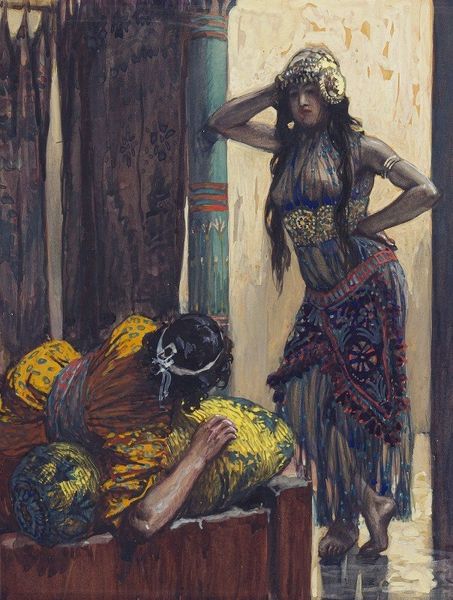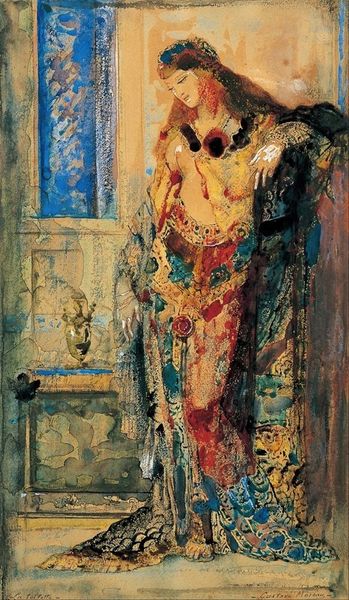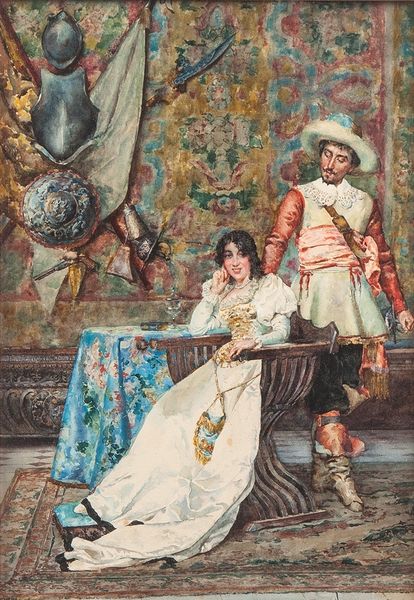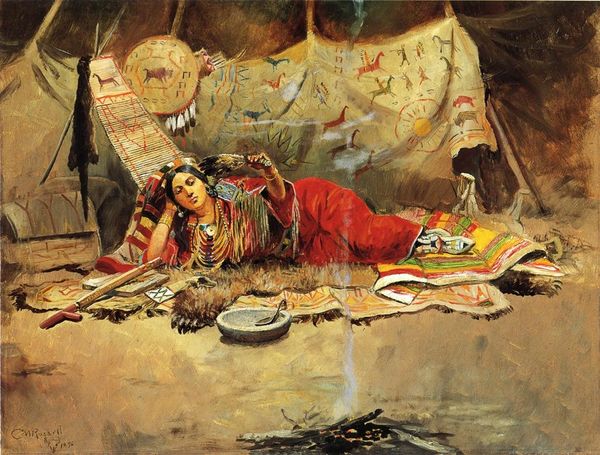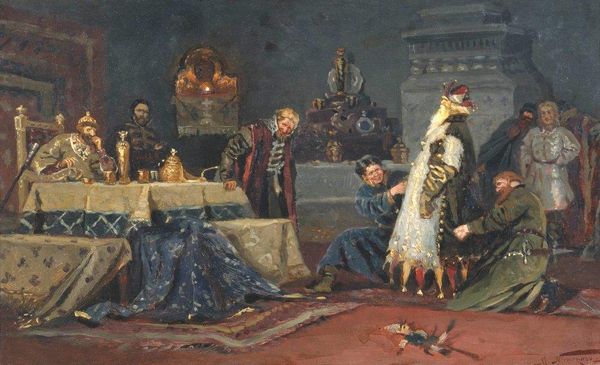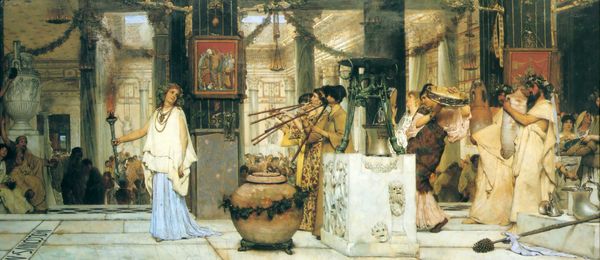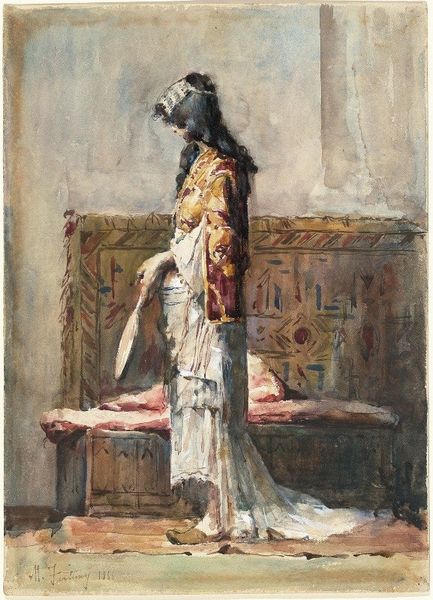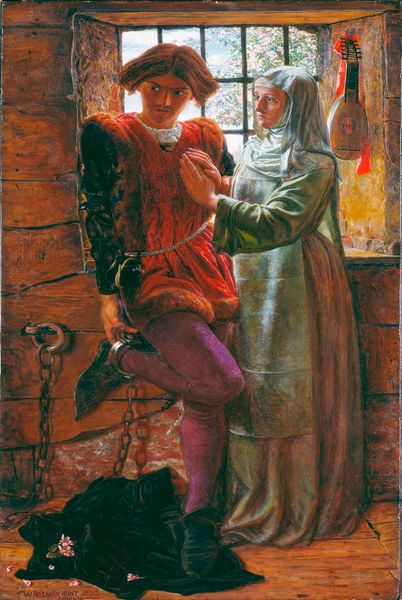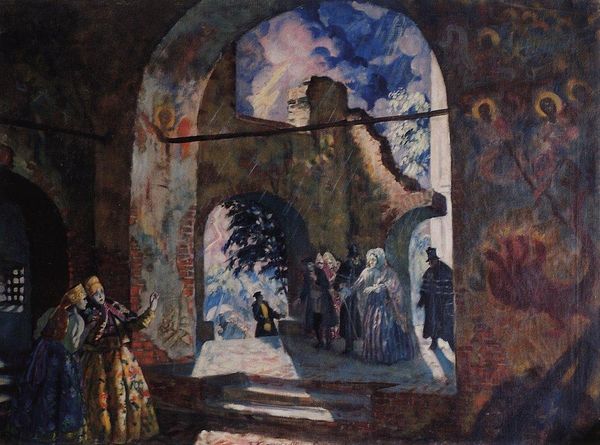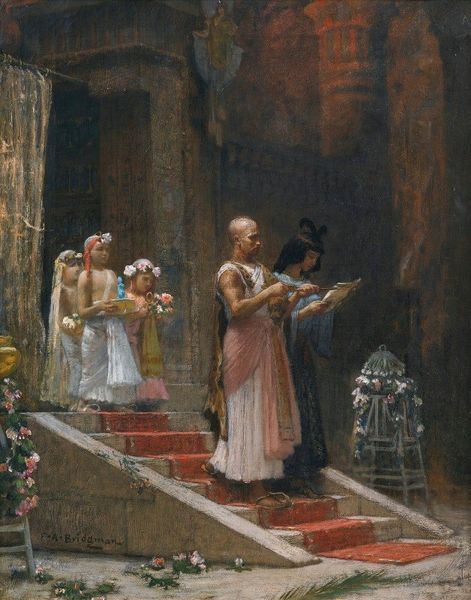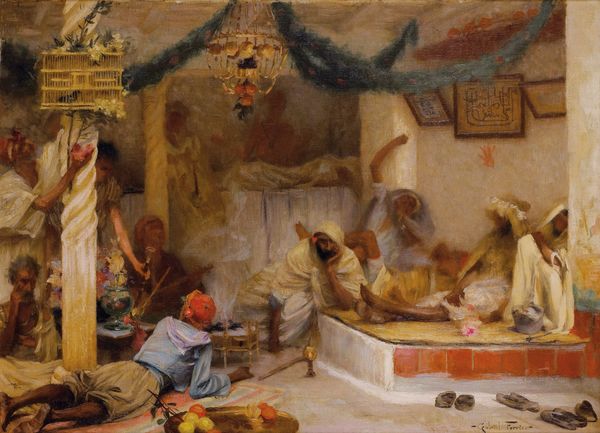
Dimensions: 26 x 35 cm
Copyright: Public domain
Curator: This is Giovanni Boldini's "Couple in Spanish Dress with Two Parrots," also known as "El Matador," painted in 1873 using oil on canvas. What strikes you first about this genre scene? Editor: Well, immediately it's the performance of it all, isn't it? The opulence of dress and décor. Those parrots feel less like pets and more like extravagant props in a carefully constructed tableau. Curator: It is meticulously staged. Boldini employs visible brushstrokes, focusing less on detailed realism and more on the textures and materiality of the garments—the matador's jacket practically shimmers, highlighting labor intensive craft traditions. The satin of her dress. Look at the accumulation of discarded seeds around the parrot stand! It suggests consumption, both literal and symbolic. Editor: Yes, there’s something caged here, beyond the birds. The woman’s elaborate attire feels constricting. Observe how the upward gaze toward the white cockatoo links her symbolically to aspirations beyond the domestic space. The birds act as exotic symbols representing freedom. Don't you think the artist sets the pair against a more intricate scene? Curator: True, and if you shift your focus to production of that space—look at the somewhat unfinished nature of the architecture around the edges and what that means for an emerging Spanish Bourgeoisie imitating court portraiture and display with access to cheaper pigments, pre-primed canvas and factory produced elements. Editor: Good point about class display and accessibility. Although, this flamboyant matador costume has the allure of Spanish exoticism popular in Paris at the time. He acts as the conquering hero while the woman yearns for more, symbolized through her looking upwards toward the white bird— Curator: The performance extends beyond their characters too: the gestural brushwork itself is a display of the artist's skill. Oil paints became increasingly industrialised and ubiquitous during this period and it plays into that tradition of "alla prima," the claim of speed, bravado, spontaneity—and value. Editor: Very insightful! I’m most drawn to how Boldini infuses the scene with layers of symbolism concerning longing, performance and even unspoken tension between social display and inner yearning, really bringing a contemporary feel to historic genre painting. Curator: I concur. Analyzing the techniques of production as well as its themes only amplifies the experience, unveiling social constructs beneath a romantic veneer, creating an engaging discourse.
Comments
No comments
Be the first to comment and join the conversation on the ultimate creative platform.
